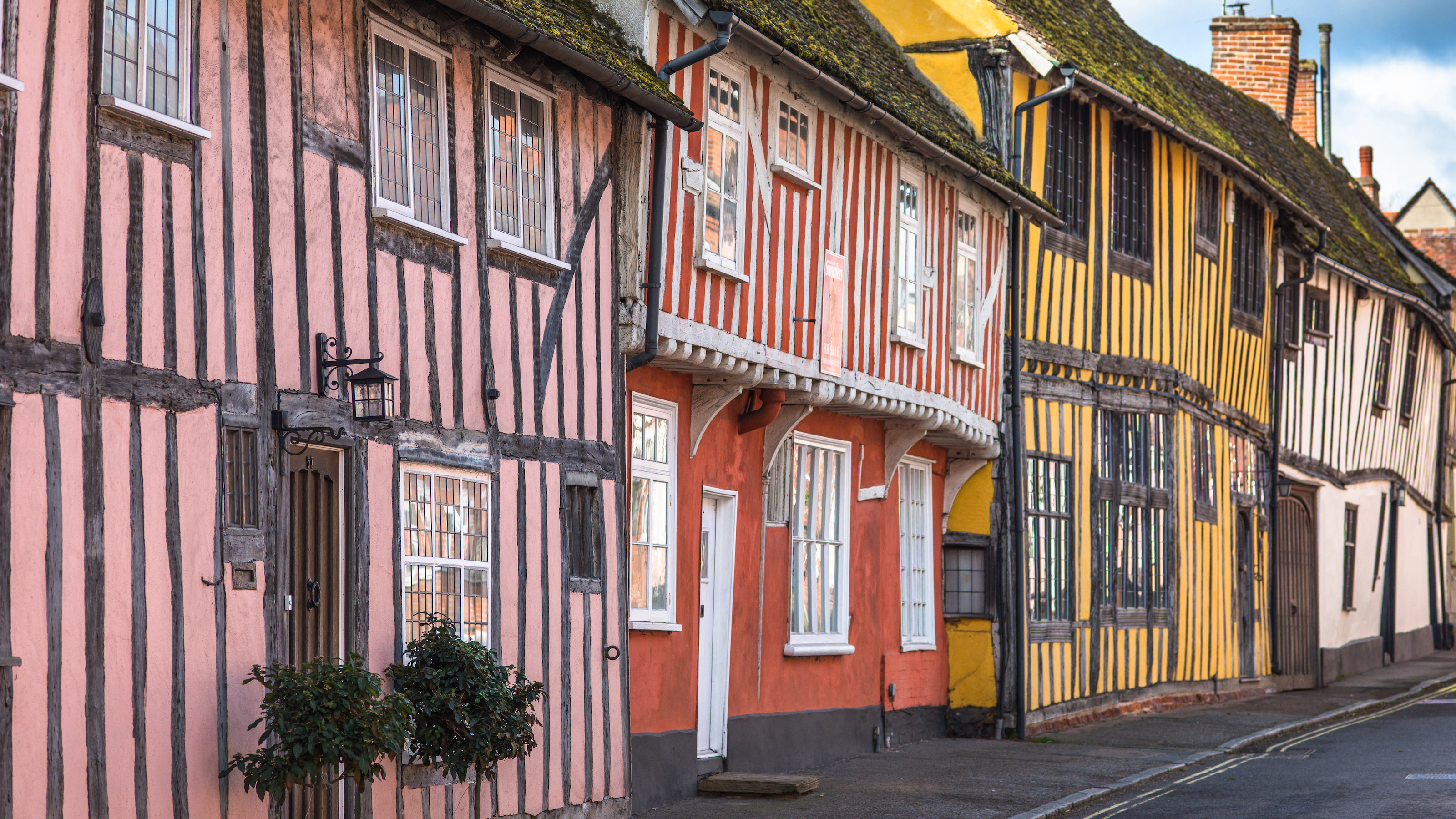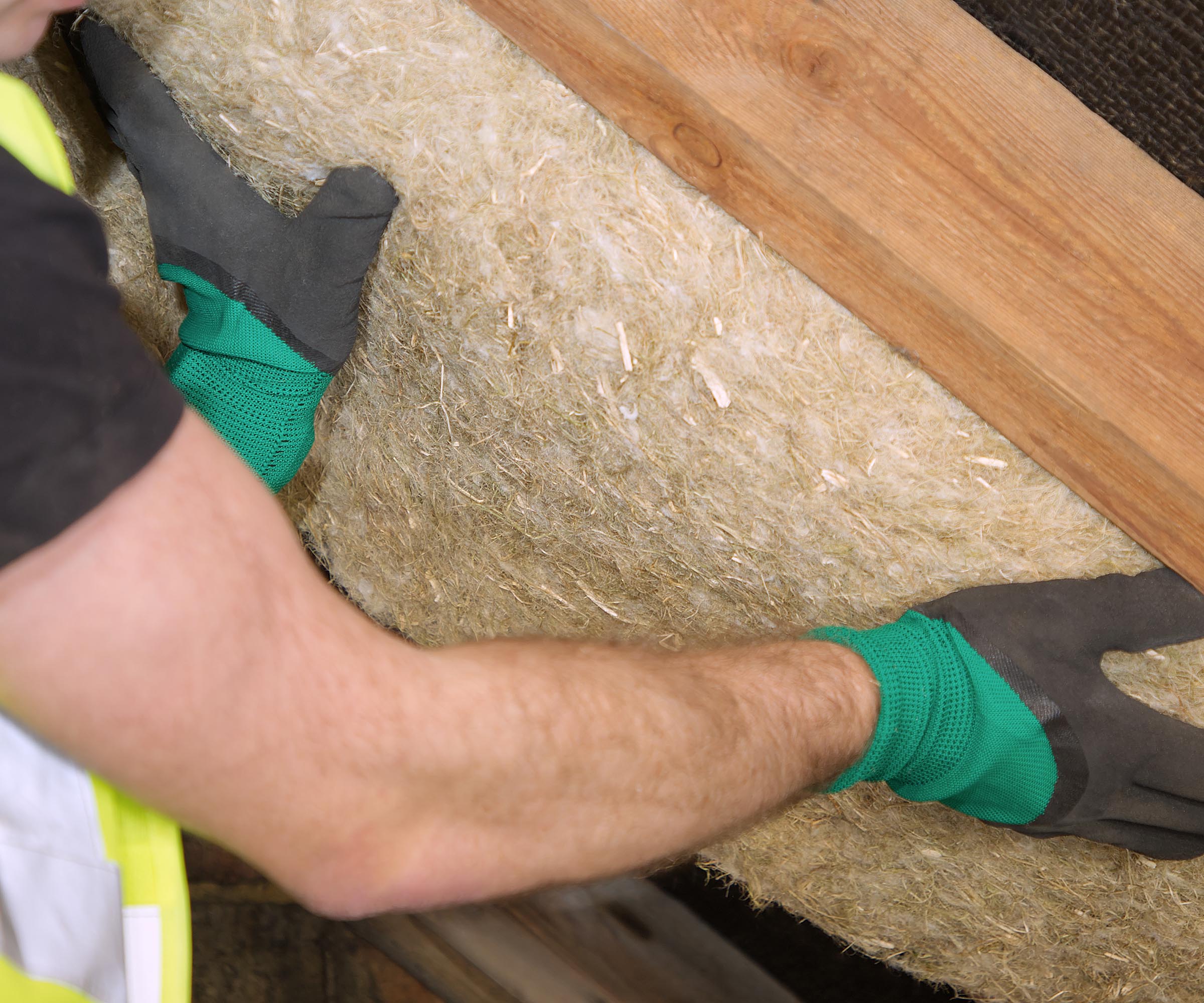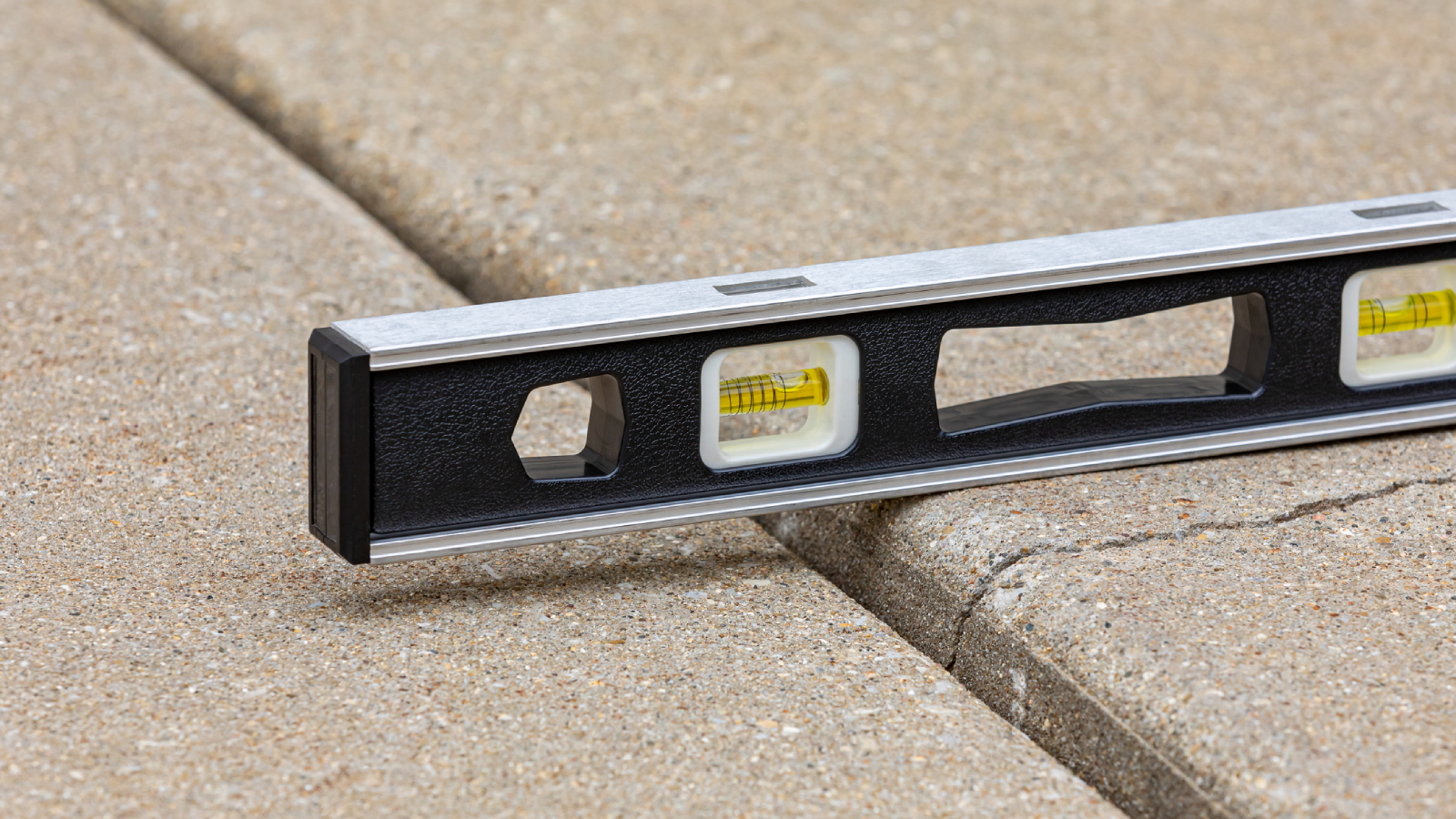9 things I wish I’d known before buying a listed building
Choosing a grade II listed cottage in need of renovation brought complications I didn’t anticipate. This is what I wish I’d known to make the project a smoother one

- 1. Listed buildings need extra permission
- 2. Insulating windows is complicated
- 3. Lime mortar and plaster are good for a historic home
- 4. Insulation can be improved
- 5. A shed can require planning permission
- 6. Insurance can cost more
- 7. Pests like your home, too
- 8. Delisting is possible
- 9. A heat pump might be an option
I’ve lived in a number of different homes now, but I’ve chosen each for practical reasons – with one exception. The home I chose with my heart rather than my head was a grade II listed cottage in need of renovation.
It still had plenty of the usual benefits of buying a house like a great location, good transport links, and proximity to family but in falling in love with a home I set aside thoughts about the extra complications that arise with a listed property.
I have no regrets about the purchase, but it was a steep learning curve and with more savvy beforehand I could have planned and budgeted better. What should I have known? That’s what I'm sharing here, so you can prepare yourself if you’re considering buying a listed building.
1. Listed buildings need extra permission
Buy a listed building and you require additional permission on top of necessary planning permission and building regulations approval for work on your home.
“If a house is listed, check which category of listing,” advises Bristol buying agent Lili Oliver at Oliver Roth. “Any works that affect the character of a listed building require listed building consent. This applies to exterior and interior changes, as well as to extensions and additions.”
But while I knew about listed building consent, what I came to realise is that it’s important to find out from the local authority what will need consent before applying if you want to make the process of renovation smoother.

Lili Oliver is the founder of Oliver Roth Property Consultants, an independent buying agent specialising in the search and acquisition of prime residential property across Bristol, Somerset and Gloucestershire. Since 2017, Oliver Roth has been advising private clients on the search and acquisition of their new home from initial consultation through to legal completion.
2. Insulating windows is complicated

Subscribe to Plotfinder.net to access over 15,000 building plots and properties that could become your next project
I didn’t expect to double glaze my listed home, but hadn’t realised that some alternatives can be clunky.
Bring your dream home to life with expert advice, how to guides and design inspiration. Sign up for our newsletter and get two free tickets to a Homebuilding & Renovating Show near you.
“The installation of double glazing is only possible when you look to replace windows that do not contribute to the significance and special interest of the building, and windows that are not significant themselves,” explains architect George Omalianakis of GOAStudio residential architects.
“You will find conservation officers with different opinions about what might be acceptable even when it comes to properties of similar historic significance,” he says.
I learned that there are things that will improve energy efficiency, however. “Draftproofing is acceptable in most cases and this is a quick win,” says George.
“Secondary glazing installation, ie the addition of a thin and openable window frame alongside the existing windows, tends to be acceptable too in conservation terms; however, it might not be the most practical or elegant solution,” he says.
“If you need to retain the existing window frames, and assuming that the existing glazing itself is not of historic importance, then you can consider the installation of slim-profile or vacuum double glazing,” he adds.

George Omalianakis is a chartered architect and RIBA conservation registrant, a specialism in historic buildings and conservation areas. He has a level 3 award in energy efficiency for older and traditional buildings. He set up his practice, GOAStudio London residential architecture, in 2009.
3. Lime mortar and plaster are good for a historic home
Lime was something I can say I’d never thought about before buying a listed home. But it was something I should have known about – particularly in the context of mortar and plaster.
Lime plaster is an internal finish for walls and lime mortar mix is used for for bedding and pointing between bricks and stonework and they’re permeable materials that were used in old buildings; using matching materials avoids affecting the building’s integrity. They’re often specified for repairs by local authorities.
While I didn’t go wrong with materials thanks to builders with historic home expertise, I know now that doing so could have meant problems in the long term, bringing costs and disruption.
4. Insulation can be improved

I thought I wouldn’t be able to do much to improve the insulation in my home, but there are measures you can take to reduce energy bills.
“Carefully installed and specified loft insulation is generally acceptable between and over the ceiling joists,” explains George Omalianakis. “As long as this does not result in the loss of historic plasterwork or roof structure, you might also be able to insulate over or under the plane of your pitched roof.”
“External wall insulation tends to be a no-no for most listed homes,” he notes. “This is because external wall insulation covers the external walls like a blanket cover and this results in loss of features, detailing, and the building’s special character.
”Internal wall insulation is an option for homes with solid brick walls and this is something that can be acceptable in some cases – rarely though. This is because of the fact that the richness of original interiors, finishes, cornices, joinery and plasterwork, will all be compromised with the introduction of a thick layer of internal wall insulation. It is only when such features have been lost or been compromised that the opportunity presents itself to insulate these internal wall surfaces.
“The installation of insulation within external (often timber frame walls) can be acceptable in some cases, and do not forget insulating the floors too especially if you have a suspended timber ground floor.
“Always use permeable (breathable) materials, seek professional specialist advice, and apply to obtain listed building consent before you carry out any building works to your listed home,” he adds.
5. A shed can require planning permission
It came as a surprise to me that there are lots of buildings I might consider putting up in the garden that require permission when they would often be counted as permitted development if it were a non-listed home.
Rather than listed building consent, however, it’s planning permission that is likely to be necessary for a shed or, if I’d had the room for one, a freestanding garage. Bear in mind that local planners will factor the new building’s impact on the home, its setting and its historic features into account when deciding.
“It’s always worth checking with the council to find out what would be allowed before you even start,” advises Jamie Jamieson of Jamieson Property Search. “Even if you think no one will ever find out, when you come to sell you it will become obvious, so don’t take the risk, as the penalties can be to take the building down and put it back to how it was before you started building.”

Jamie Jamieson owns and runs Jamieson Property Search, sourcing homes for clients over the last 20 years and he has bought over £100m worth of houses over the years, in Norfolk and Suffolk.
6. Insurance can cost more
One of the hidden costs of buying a home – those that many of us forget to factor into what the final bill for our purchase will be – is that for home insurance. What I didn’t predict when I budgeted for a listed cottage is that the home insurance typically costs more for a historic building. The costs for materials and labour for rebuild or repair of a listed home account for the difference in premiums from non-listed houses.
It’s important to provide the correct information to insurers when you’re looking for a policy for a listed home, too. “Make sure you speak to your surveyor who did the original survey to get the right figure for the reinstatement cost of rebuilding the property for insurance purposes,” says Jamie Jamieson. “Often the rebuilding cost is more than the purchase price especially if it has a star in the listing.”
7. Pests like your home, too

In my case it was a mouse I actually spotted squeezing into my home through an astonishingly small space that alerted me to pests taking up residence. And while pests don’t limit themselves to listed homes, where repairs haven’t identified a home’s gaps and cracks they can take advantage and cause extensive damage to it and to cables.
I didn’t have a thatched roof, but rodents can chew thatch and birds take it for nests or nest there. Wire netting can reduce pests on the roof, but they can still prove a problem.
The lesson I learned is first to keep up with maintenance and repairs, but also that you might need to call in pest professionals. Just make sure they’re experienced in working with historic homes.
8. Delisting is possible
While its listing did make renovations more complex than in a non-listed home, the option of my cottage’s being delisted to allow changes to be made didn’t occur to me because the building retained many original features.
Homebuilding & Renovating’s Amy Willis did not have the same experience when she bought a listed home, however. Having to secure consent for the work she wanted to do was time consuming and complicated and later inspection revealed the home had already lost much of its historical fabric when it was listed. In this case an application to delist a listed building was the answer.
9. A heat pump might be an option
My ownership of a listed home predated the increasing adoption of heat pumps, but there’s good news if you are thinking of doing so now.
“Historic England’s latest guidance in July 2024 seeks to set a better balance between conservation and climate action,” says George Omalianakis.
“When it comes to changing old boilers and hot/cold water systems to low carbon alternatives, such as to heat pumps, Historic England considers such changes to be generally acceptable, if not actively encouraged.
“A lot depends on the listing and on the significance of the property, however the installation of an air or ground source heat pump makes oil tanks, plant equipment and old piping redundant, which means that they can then be removed.
“You can further avoid damage to the historic fabric by being careful with where you place the heat pump unit and how the new piping runs across the house,” he says.
“In terms of approvals, listed building consent is required when the heat pumps are fixed to the building. And you might require planning consent as well.” Check with your local planning authority.
Owning a listed home is more onerous than buying one that isn’t listed and it does come with additional costs and responsibilities. But there can be benefits that make it well worthwhile. You might be able to do more to increase its energy efficiency than you thought and if, like the home I bought, it is in need of repair and renovation, there’s the satisfaction of caring for a historic building. There’s also a whole lot to be said for living somewhere unique rather than identikit.

Sarah is a freelance journalist and editor writing for websites, national newspapers, and magazines. She’s spent most of her journalistic career specialising in homes.
She loves testing the latest home appliances and products, and investigating the benefits, costs and practicalities of home improvement. She is an experienced renovator and is currently remodelling the ground floor of her new home.
She was Executive Editor of Ideal Home and has worked for Your Home and Homes & Ideas. Her work has published by numerous titles, including The Guardian, channel4.com, Houzz, Grand Designs, Homes & Gardens, House Beautiful, Homes & Antiques, Real Homes, The English Home, Period Living, Beautiful Kitchens, Good Homes and Country Homes & Interiors.
